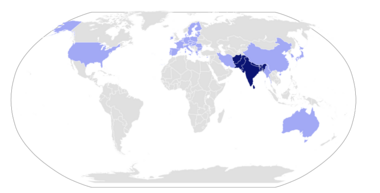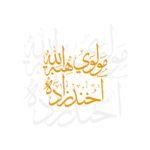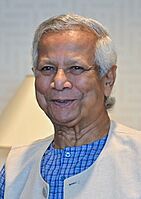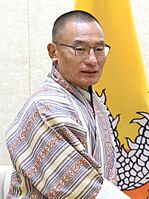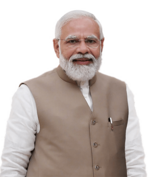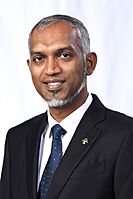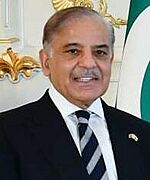South Asian Association for Regional Cooperation facts for kids
Quick facts for kids
South Asian Association for Regional Cooperation
In other languages:
|
|||||||||||||||||||||||||||||||||||||||||||
|---|---|---|---|---|---|---|---|---|---|---|---|---|---|---|---|---|---|---|---|---|---|---|---|---|---|---|---|---|---|---|---|---|---|---|---|---|---|---|---|---|---|---|---|
|
Location of the South Asian Association for Regional Cooperation (dark green)
in Asia (dark grey) |
|||||||||||||||||||||||||||||||||||||||||||
| Headquarters | Kathmandu, Nepal 28°10′N 84°15′E / 28.167°N 84.250°E |
||||||||||||||||||||||||||||||||||||||||||
| Largest city | Mumbai, India 19°04′34″N 72°52′39″E / 19.07611°N 72.87750°E |
||||||||||||||||||||||||||||||||||||||||||
| Working language | English | ||||||||||||||||||||||||||||||||||||||||||
| Official languages of contracting states |
24 languages | ||||||||||||||||||||||||||||||||||||||||||
| Religion
(2025)
|
|
||||||||||||||||||||||||||||||||||||||||||
| Demonym(s) | South Asian | ||||||||||||||||||||||||||||||||||||||||||
| Type | Regional organisation | ||||||||||||||||||||||||||||||||||||||||||
| Member states |
8 members:
9 observers:
|
||||||||||||||||||||||||||||||||||||||||||
| Leaders | |||||||||||||||||||||||||||||||||||||||||||
|
• Secretary-General
|
Golam Sarwar | ||||||||||||||||||||||||||||||||||||||||||
|
• Chairmanship of SAARC
|
|||||||||||||||||||||||||||||||||||||||||||
| Legislature | None | ||||||||||||||||||||||||||||||||||||||||||
| Establishment | 8 December 1985 | ||||||||||||||||||||||||||||||||||||||||||
| Area | |||||||||||||||||||||||||||||||||||||||||||
|
• Total
|
5,222,321 km2 (2,016,349 sq mi) | ||||||||||||||||||||||||||||||||||||||||||
|
• Water (%)
|
8 | ||||||||||||||||||||||||||||||||||||||||||
| Population | |||||||||||||||||||||||||||||||||||||||||||
|
• 2025 estimate
|
|||||||||||||||||||||||||||||||||||||||||||
|
• Density
|
381.6/km2 (988.3/sq mi) | ||||||||||||||||||||||||||||||||||||||||||
| GDP (PPP) | 2025 estimate | ||||||||||||||||||||||||||||||||||||||||||
|
• Total
|
|||||||||||||||||||||||||||||||||||||||||||
|
• Per capita
|
|||||||||||||||||||||||||||||||||||||||||||
| GDP (nominal) | 2025 estimate | ||||||||||||||||||||||||||||||||||||||||||
|
• Total
|
|||||||||||||||||||||||||||||||||||||||||||
|
• Per capita
|
|||||||||||||||||||||||||||||||||||||||||||
| HDI (2023) | medium |
||||||||||||||||||||||||||||||||||||||||||
| Currency |
8 currencies
Afghan afghani (؋) (AFN)
Bangladeshi taka (৳) (BDT) Bhutanese ngultrum (Nu.) (BTN) Indian rupee (₹) (INR) Maldivian rufiyaa (.ރ) (MVR) Nepalese rupee (रु) (NPR) Pakistani rupee (₨) (PKR) Sri Lankan rupee (රු) (LKR) |
||||||||||||||||||||||||||||||||||||||||||
| Time zone | UTC+4:30 to +6:00 (AFT, PST, MVT, IST, SLST, NPT, BST, BTT) | ||||||||||||||||||||||||||||||||||||||||||
| Calling code | |||||||||||||||||||||||||||||||||||||||||||
| Internet TLD | |||||||||||||||||||||||||||||||||||||||||||
The South Asian Association for Regional Cooperation (SAARC) is a group of countries in South Asia that work together. It's like a club for these nations to cooperate on different things. The countries that are members are Afghanistan, Bangladesh, Bhutan, India, Maldives, Nepal, Pakistan, and Sri Lanka.
SAARC covers about 3% of the world's land and is home to 21% of the world's people. It was started in Dhaka, Bangladesh, on December 8, 1985. Its main office, called the secretariat, is in Kathmandu, Nepal. The group aims to help these countries grow their economies and work together more closely. For example, they created the South Asian Free Trade Area in 2006 to make trade easier. SAARC also works with other big groups like the United Nations and the European Union.
Contents
How SAARC Started
The idea for countries in South Asia to work together began a long time ago. Discussions happened at conferences in New Delhi in 1947, the Philippines in 1950, and Colombo, Sri Lanka, in 1954.
In the late 1970s, seven countries in South Asia agreed to form a group. These were Bangladesh, Bhutan, India, the Maldives, Nepal, Pakistan, and Sri Lanka. They wanted to create a platform for friendship and understanding. Bangladesh's President Ziaur Rahman was a key person in suggesting this idea. He wrote letters to other leaders, explaining why working together was important.
In 1977, President Rahman talked about regional cooperation with India's Prime Minister. Also, King Birendra of Nepal suggested that South Asian countries should work together on sharing river waters.
Efforts to create the group sped up in 1979. This was because of the Soviet invasion of Afghanistan, which made the region feel less safe. Officials from the foreign ministries of the seven countries met in Colombo in April 1981. Bangladesh's idea was supported by Nepal, Sri Lanka, Bhutan, and Maldives. India and Pakistan were unsure at first. India worried that smaller neighbors might team up against it. Pakistan thought it might be a way for India to become even more powerful economically.
However, after many talks, it was decided that Bangladesh would prepare a plan. In 1981, a group identified five main areas for cooperation: agriculture, rural development, telecommunications, meteorology, and health. More areas were added later.
In 1983, the foreign ministers of the seven countries officially launched the "Declaration on South Asian Association for Regional Cooperation" (SAARC) in Dhaka. They started working on these areas right away.
The first SAARC meeting, called a summit, happened in Dhaka on December 7-8, 1985. Leaders from all seven founding countries signed the declaration. These leaders included King Jigme Singye Wangchuk of Bhutan, President Muhammad Zia-ul-Haq of Pakistan, Prime Minister Rajiv Gandhi of India, King Birendra of Nepal, President Junius Richard Jayewardene of Sri Lanka, and President Maumoon Abdul Gayoom of Maldives.
Member and Observer Countries
SAARC has eight member states and nine observer countries.
Member Countries
The member states are Afghanistan, Bangladesh, Bhutan, India, the Maldives, Nepal, Pakistan, and Sri Lanka.
SAARC started with seven countries in 1985. In 2005, Afghanistan wanted to join. There was a lot of discussion about this. Some wondered if Afghanistan truly fit the definition of a "South Asian" country.
Afghanistan officially joined SAARC as its eighth member in April 2007. Even though there were political changes in Afghanistan in 2021, it is still a SAARC member. The other members decided that Bangladesh would choose the next Secretary-General for SAARC in 2023, instead of Afghanistan.
Observer Countries
Countries with "observer status" can attend some meetings but are not full members. These include Australia, China, the European Union, Iran, Japan, Mauritius, Myanmar, South Korea, and the United States.
China applied for observer status in 2007 and was strongly supported by Bangladesh, Sri Lanka, Maldives, Nepal, and Pakistan. In 2006, the US, South Korea, and the European Union were also granted observer status. Iran and Mauritius joined as observers shortly after.
Countries That Might Join Later
Some other countries have shown interest in joining SAARC or becoming observers. Myanmar wants to become a full member. China and Russia have also asked to join. Turkey applied for observer status in 2012. Other countries like South Africa, Indonesia, Jordan, Canada, New Zealand, Ireland, Saudi Arabia, the United Kingdom, and Yemen have also expressed interest.
SAARC Headquarters and Offices
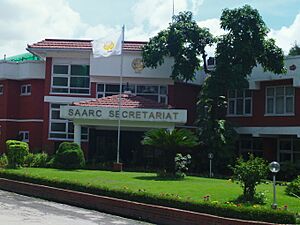
The main office for SAARC, called the Secretariat, was set up in Kathmandu, Nepal, on January 16, 1987. The King of Nepal, Birendra Bir Bikram Shah, officially opened it.
Specialized Bodies
SAARC has special offices in different member countries. These offices focus on specific tasks. They are managed by boards with representatives from all member states.
- SAARC Arbitration Council (SARCO) in Islamabad, Pakistan.
- SAARC Development Fund (SDF) in Thimphu, Bhutan.
- South Asian University (SAU) in New Delhi, India.
- South Asian Regional Standards Organization (SARSO) in Dhaka, Bangladesh.
Regional Centres
The SAARC Secretariat also gets help from Regional Centres located in member countries. These centers help with cooperation in specific areas. Some centers were closed in 2015.
- SAARC Agriculture Centre (SAC) in Dhaka, Bangladesh.
- SAARC Disaster Management Centre (SDMC) in Gandhinagar, India.
- SAARC Tuberculosis and HIV/AIDS Centre (STAC) in Bhaktapur, Nepal.
- SAARC Energy Centre (SEC) in Islamabad, Pakistan.
- SAARC Cultural Centre (SCC) in Colombo, Sri Lanka.
SAARC does not have an official song or anthem yet.
Important SAARC Groups
SAARC has six main groups, called Apex Bodies:
- SAARC Chamber of Commerce & Industry (SCCI)
- South Asian Association for Regional Cooperation in Law (SAARCLAW)
- South Asian Federation of Accountants (SAFA)
- South Asia Foundation (SAF)
- South Asia Initiative to End Violence Against Children (SAIEVAC)
- Foundation of SAARC Writers and Literature (FOSWAL)
There are also about 18 other recognized groups that work with SAARC.
SAARC Disaster Management Centre
The SAARC Disaster Management Centre (SDMC) helps countries in South Asia prepare for and respond to disasters. Its main goals are to give advice, offer technical help, and provide training.
What it does:
- Advice and Support: SDMC helps countries create plans for managing disasters.
- Training: It holds training programs to make countries better at handling disasters.
- Sharing Information: It helps countries share information and ideas about disaster management.
Projects:
- South Asian Disaster Knowledge Network: A place to share information about disasters.
- South Asia Digital Vulnerability Atlas (SADVA): A project to map areas in South Asia that are at risk from disasters.
Challenges and Cooperation
It has been hard to achieve lasting peace and success in South Asia because of various conflicts. Discussions about political issues often happen on the side of SAARC meetings. SAARC tries not to get involved in the internal problems of its member countries. At some meetings, leaders strongly emphasized working together to fight terrorism.
The 19th SAARC summit, which was supposed to be in Pakistan, was canceled. This happened because India, Bangladesh, Bhutan, and Afghanistan decided not to attend after a terrorist attack in Uri in 2016. This was the first time four countries boycotted a SAARC summit, leading to its cancellation.
Some people believe SAARC has not been very effective because of disagreements between members. For example, Pakistan has sometimes brought up issues against India at meetings. India, on the other hand, has focused on its concerns about terrorism, which it sees as a problem between two countries, not for the whole group to discuss.
Terrorism has been a big challenge for SAARC, causing problems between member states. The 2016 Uri attack especially affected relations and made it harder for countries to work together.
Recently, Dr. Muhammad Yunus, a leader in Bangladesh, has shown interest in making SAARC active again. However, some leaders in India were cautious about this. India's External Affairs Minister, S. Jaishankar, suggested that Bangladesh should not "normalize terrorism" by trying to restart SAARC activities. This was seen as a message about Pakistan's alleged role in hindering regional cooperation.
Dr. Minendra Rijal, a former Defence Minister of Nepal, also said that Pakistan's support for terrorism has stopped SAARC from growing and caused economic losses.
China has also tried to create other ways for countries in South Asia to work together, especially since its request to join SAARC was not accepted in 2005. China has started projects like the China-South Asia Cooperation Forum and the Belt and Road Initiative. Most South Asian countries, except India and Bhutan, are part of China's Belt and Road Initiative. These efforts are seen as China trying to build alternatives to SAARC.
Overall, SAARC has faced difficulties in bringing the region closer together.
South Asian Free Trade Area (SAFTA)
The idea of a South Asian Free Trade Area (SAFTA) was to be the first step towards a bigger economic union. This would mean easier trade, then a common market, and finally a full economic union. In 1995, SAARC ministers agreed to work towards SAFTA. A group was set up in 1996 to figure out the steps needed.
The SAFTA Agreement was signed on January 6, 2004, in Islamabad, Pakistan. It officially started on January 1, 2006. Under this agreement, SAARC members aimed to lower their trade taxes to 20% by 2009. After the agreement began, a special council was formed with the trade ministers from each country.
Trade within SAARC has grown, but it's still a small part of the region's total trade. For example, in 2012, SAARC exports increased a lot. However, trade between SAARC countries is only about 1% of their total economic output. In comparison, the ASEAN group, which is smaller, has 10% of its trade happening within its own member countries.
The goal was for SAFTA to lead to a South Asian Economic Union. But current trade and investment between the countries are not very strong. Trade within the SAARC region is only about five percent of all trade in South Asia. Also, foreign investment between these countries is very low, around four percent of the total.
The Asian Development Bank believes that trade between SAARC countries could increase a lot. They estimated that agricultural exports could go from $8 billion to $22 billion per year. This means there's a lot of untapped potential for more trade within the region.
SAARC Visa Exemption Scheme
The SAARC Visa Exemption Scheme started in 1992. The leaders decided that certain important people should be able to travel between SAARC countries without needing a visa. This helps people from different countries meet and connect.
Currently, 24 types of people can get this special travel document. These include important officials, judges, lawmakers, senior government workers, business owners, journalists, and athletes.
Each member country gives these special visa stickers to its own citizens who qualify. The visa usually lasts for one year. Immigration officials from SAARC countries regularly check how the scheme is working.
SAARC Awards
SAARC Award
The SAARC Award was created in 2004 to support people and groups in the region. Its main goals are:
- To encourage activities that help SAARC's goals.
- To honor those who improve the lives of women and children.
- To recognize great work in peace, development, fighting poverty, protecting the environment, and regional cooperation.
- To honor other important achievements.
The SAARC Award includes a gold medal, a special letter, and a cash prize of $25,000. It has only been given once, to the late President Ziaur Rahman of Bangladesh, after he passed away.
SAARC Literary Award
The SAARC Literary Award is given every year by the Foundation of SAARC Writers and Literature (FOSWAL) since 2001. This is a top SAARC group. Famous winners include Shamshur Rahman, Mahasweta Devi, Jayanta Mahapatra, Abhi Subedi, Mark Tully, Sitakant Mahapatra, Uday Prakash, Suman Pokhrel, and Abhay K.
Suman Pokhrel, a poet, lyricist, and translator from Nepal, is the only person to have won this award twice.
SAARC Youth Award
The SAARC Youth Award celebrates amazing young people from the SAARC region. This award is important because it gives recognition to young winners across South Asia. The award focuses on different themes each year. It recognizes young people who are dedicated to helping the world through things like inventions, protecting the environment, or helping after disasters. Winners are those who have worked hard to improve things in their own countries and set an example for the whole SAARC region.
A special committee chooses the best candidate for the SAARC Youth Award.
Here are some past winners and their themes:
- 1992: World Population Issue and Welfare - Painting; - Devang Soparkar (India)
- 1997: Outstanding Social Service in Community Welfare – Sukur Salek (Bangladesh)
- 1998: New Inventions and Shanu — Najmul Hasnain Shah (Pakistan)
- 2001: Creative Photography: South Asian Diversity – Mushfiqul Alam (Bangladesh)
- 2002: Outstanding contribution to protect the Environment – Masil Khan (Pakistan)
- 2003: Invention in the Field of Traditional Medicine – Hassan Sher (Pakistan)
- 2004: Outstanding contribution to raising awareness of TB and/or HIV/AIDS – Ajij Prasad Poudyal (Nepal)
- 2006: Promotion of Tourism in South Asia – Syed Zafar Abbas Naqvi (Pakistan)
- 2008: Protecting the Environment in South Asia – Deepani Jayantha (Sri Lanka)
- 2009: Outstanding contribution to humanitarian works in the aftermath of Natural Disasters – Ravikant Singh (India)
- 2010: Outstanding contribution for the Protection of Environment and mitigation of Climate Change – Anoka Primrose Abeyrathne (Sri Lanka)
- 2011: Youth leadership in the fight against social ills - Mr. Mohamed Faseen Rafiu (The Maldives)
SAARC Leaders and Meetings
Secretaries-General of SAARC
The Secretary-General is the main leader of the SAARC Secretariat. They help manage the organization's daily work.
| # | Name | Country | Took office | Left office |
|---|---|---|---|---|
| 1 | Abul Ahsan | Bangladesh | 16 January 1985 | 15 October 1989 |
| 2 | Kant Kishore Bhargava | India | 17 October 1989 | 31 December 1991 |
| 3 | Ibrahim Hussein Zaki | Maldives | 1 January 1992 | 31 December 1993 |
| 4 | Yadav Kant Silwal | Nepal | 1 January 1994 | 31 December 1995 |
| 5 | Naeem U. Hasan | Pakistan | 1 January 1996 | 31 December 1998 |
| 6 | Nihal Rodrigo | Sri Lanka | 1 January 1999 | 10 January 2002 |
| 7 | Q. A. M. A. Rahim | Bangladesh | 11 January 2002 | 28 February 2005 |
| 8 | Chenkyab Dorji | Bhutan | 1 March 2005 | 29 February 2008 |
| 9 | Sheel Kant Sharma | India | 1 March 2008 | 28 February 2011 |
| 10 | Fathimath Dhiyana Saeed | Maldives | 1 March 2011 | 11 March 2012 |
| 11 | Ahmed Saleem | Maldives | 12 March 2012 | 28 February 2014 |
| 12 | Arjun Bahadur Thapa | Nepal | 1 March 2014 | 28 February 2017 |
| 13 | Amjad Hussain B. Sial | Pakistan | 1 March 2017 | 29 February 2020 |
| 14 | Esala Ruwan Weerakoon | Sri Lanka | 1 March 2020 | 3 March 2023 |
| 15 | Golam Sarwar | Bangladesh | 4 March 2023 | Incumbent |
SAARC Summits
SAARC summits are important meetings where the leaders of the member countries come together to discuss plans and make decisions.
| No | Date | Country | Host City | Host Leader |
|---|---|---|---|---|
| 1st | 7–8 December 1985 | Bangladesh | Dhaka | Ataur Rahman Khan |
| 2nd | 16–17 November 1986 | India | Bengaluru | Rajiv Gandhi |
| 3rd | 2–4 November 1987 | Nepal | Kathmandu | King Birendra Bir Bikram Shah |
| 4th | 29–31 December 1988 | Pakistan | Islamabad | Benazir Bhutto |
| 5th | 21–23 November 1990 | Maldives | Malé | Maumoon Abdul Gayoom |
| 6th | 21 December 1991 | Sri Lanka | Colombo | Ranasinghe Premadasa |
| 7th | 10–11 April 1993 | Bangladesh | Dhaka | Khaleda Zia |
| 8th | 2–4 May 1995 | India | New Delhi | P V Narasimha Rao |
| 9th | 12–14 May 1997 | Maldives | Malé | Maumoon Abdul Gayoom |
| 10th | 29–31 July 1998 | Sri Lanka | Colombo | Chandrika Kumaratunga |
| 11th | 4–6 January 2002 | Nepal | Kathmandu | Sher Bahadur Deuba |
| 12th | 2–6 January 2004 | Pakistan | Islamabad | Zafarullah Khan Jamali |
| 13th | 12–13 November 2005 | Bangladesh | Dhaka | Khaleda Zia |
| 14th | 3–4 April 2007 | India | New Delhi | Manmohan Singh |
| 15th | 1–3 August 2008 | Sri Lanka | Colombo | Mahinda Rajapaksa |
| 16th | 28–29 April 2010 | Bhutan | Thimphu | Jigme Thinley |
| 17th | 10–11 November 2011 | Maldives | Addu | Mohammed Nasheed |
| 18th | 26–27 November 2014 | Nepal | Kathmandu | Sushil Koirala |
| 19th | 15–16 November 2016 | Pakistan | Islamabad | Cancelled |
Current Leaders of SAARC Countries
These are the current leaders of the SAARC member states. They are either the head of their country or the head of their government.
-
 Afghanistan
Afghanistan
Hibatullah Akhundzada
Supreme Leader of Afghanistan
(de facto) -
 People's Republic of Bangladesh
People's Republic of Bangladesh
Muhammad Yunus
Chief Adviser to the Government of Bangladesh




